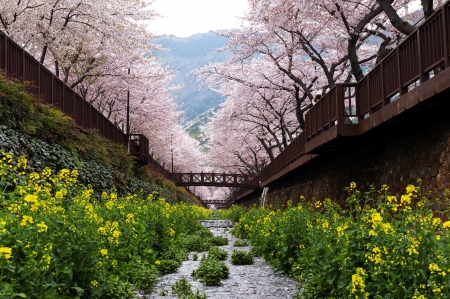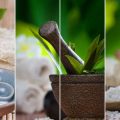Introduction to Seasonal Feng Shui in the UK
Feng Shui, with its ancient roots and mindful approach to living, has long offered a pathway to balance and serenity within our homes. Yet, when translated for the British context, this philosophy gains fresh relevance by embracing the unique tapestry of local seasons and native flora. In the UK, where the landscape shifts dramatically from the delicate emergence of snowdrops in spring to the fiery foliage of autumn, each season brings its own energy—a rhythm that can be thoughtfully echoed indoors. By aligning traditional Feng Shui principles with Britain’s distinctive natural cycles, we can create spaces that not only feel harmonious but are also deeply connected to our surroundings. This approach celebrates both heritage and locality, encouraging us to draw upon British plants as living accents that transform our interiors in tune with nature’s calendar. As we explore how seasonal Feng Shui can harmonise British homes, we’ll discover how local flora serves as both inspiration and practical tool for creating uplifting, balanced environments all year round.
2. The Essence of Local Flora in Feng Shui
Incorporating native British plants into your living environment is more than a nod to the picturesque countryside—it’s a harmonious way to align your home with the principles of Feng Shui while embracing the unique energy of Britain’s natural landscape. Local flora, steeped in centuries of tradition and symbolism, plays a vital role in balancing energy flows, or ‘qi’, within residential spaces. By choosing species that thrive naturally in Britain’s climate, homeowners can create a seamless connection between indoor and outdoor spaces, enhancing both wellbeing and aesthetic appeal.
Why Native Plants Matter
Native British plants are uniquely adapted to local weather patterns and soil conditions. Their resilience fosters a sense of stability and grounding, qualities central to effective Feng Shui. Unlike exotic imports that may struggle indoors or disrupt the local ecosystem, indigenous varieties reinforce the natural balance—encouraging positive energy circulation throughout your home.
The Symbolic Power of British Flora
Every plant carries its own meaning within British folklore and Feng Shui alike. When selected thoughtfully, these plants can be used to attract specific energies—be it tranquility, prosperity, or protection—while maintaining an authentic connection to place.
Common Native Plants and Their Energetic Qualities
| Plant | Traditional Significance | Feng Shui Benefit |
|---|---|---|
| English Ivy | Loyalty & Endurance | Promotes growth and supports longevity in relationships and endeavours |
| Bluebell | Gratitude & Humility | Invites calmness and gentle communication into shared spaces |
| Hawthorn | Protection & Hope | Cleanses stagnant energy and guards against negativity at entrances |
| Heather | Good Fortune & Admiration | Encourages abundance and uplifts the mood in communal areas |
| Oak Sapling | Strength & Wisdom | Instils stability; ideal for grounding study rooms or meditation corners |
By weaving these native species into your interiors—whether as potted plants, floral arrangements, or subtle touches in décor—you invite nature’s wisdom indoors. This not only enhances the flow of positive energy but also celebrates Britain’s rich horticultural heritage. Such mindful integration ensures that every season brings fresh vitality to your living spaces while keeping you rooted in local tradition.

3. British Plants for Spring Vitality
Embracing the vibrant energy of spring, British native plants offer a harmonious bridge between local tradition and Feng Shui principles. Among the most beloved heralds of the season are bluebells and daffodils, both treasured not only for their beauty but also for their symbolic significance within the home. Bluebells, carpeting ancient woodlands with their enchanting blue hue, evoke serenity and renewal—qualities essential for revitalising indoor spaces after winter’s dormancy. In Feng Shui terms, their presence infuses rooms with a gentle flow of fresh chi, encouraging clarity and emotional balance.
Daffodils, meanwhile, stand as icons of hope and new beginnings across the UK. Their cheerful golden blooms brighten gardens, window sills, and living areas alike, dispelling stagnant energy and inviting prosperity. By incorporating clusters of daffodils in communal spaces or entryways, you foster an atmosphere of optimism and growth—an ideal foundation for any seasonal reset. Both bluebells and daffodils are not just aesthetically pleasing; they also resonate deeply with the British sense of place, rooting your interiors in the rhythms of the local landscape while subtly enhancing your home’s energetic flow.
4. Summer Greens: Invoking Calm and Vibrancy
As the British summer unfolds, our living spaces can be transformed by the season’s most captivating flora. Drawing from local gardens and hedgerows, summer greens like lavender and foxgloves not only fill interiors with colour and fragrance but also invite tranquillity and creative energy—key qualities for an uplifting Feng Shui atmosphere.
Lavender: A Scent of Serenity
Lavender, with its silvery foliage and soothing purple blooms, is a quintessential British summer staple. Renowned for its calming properties, lavender encourages relaxation, reduces stress, and enhances mindfulness. Placing small pots or freshly cut stems in communal areas—such as the lounge or reading nook—can help diffuse tension and create a peaceful flow of energy throughout the home.
Foxgloves: Inspiring Creativity
The tall spires of foxglove, beloved for their vibrant bells in hues of pinks, whites, and purples, are synonymous with English cottage gardens. These plants symbolise creativity and inspiration in Feng Shui philosophy. Arranging foxgloves near workspaces or creative corners encourages fresh ideas to flourish while injecting natural drama into the décor.
Integrating Summer Flora: Placement & Purpose
| Plant | Ideal Placement | Feng Shui Benefit |
|---|---|---|
| Lavender | Windowsills, bedside tables, entranceways | Calmness, restful sleep, welcoming energy |
| Foxglove | Study areas, dining tables, garden borders visible from indoors | Inspiration, creativity boost, visual interest |
Cultivating Harmony with Local Greens
Sourcing these plants locally not only supports British biodiversity but also roots your space more deeply within its regional context—a key aspect of authentic Feng Shui practice. Whether arranged in vases or cultivated in outdoor planters that connect seamlessly with interior views, these seasonal greens bring a sense of balance and vitality to modern British homes.
5. Autumn Warmth: Bringing Cosiness with Native Foliage
As the British landscape transitions into autumn, the air grows crisp and the days shorten, making it the perfect season to infuse your home with warmth and balance through native flora. Incorporating plants such as heather (Calluna vulgaris) and holly (Ilex aquifolium) not only enhances your interiors aesthetically but also aligns with Feng Shui principles by embracing the natural cycles of the environment.
Heather: A Symbol of Comfort and Richness
Heather thrives in many parts of the UK and is renowned for its vibrant purples, pinks, and soft creams. During autumn, heather’s hues echo the changing colours of British moorlands, bringing a sense of comfort and connection to nature indoors. According to Feng Shui, its gentle energy can soften spaces that feel stark or cold after summer’s brightness fades. Positioning heather near entryways or in living rooms encourages positive chi flow while adding a traditional British touch.
Holly: Festive Cheer and Protective Balance
Holly, with its glossy green leaves and striking red berries, is deeply embedded in British folklore and seasonal celebrations. Its presence during autumn not only signals the approach of winter but also symbolises protection and good fortune in Feng Shui practice. Holly can be arranged as a centrepiece or placed in corners to balance out stagnant energy, providing both visual warmth and spiritual security as evenings grow longer.
Creating Cosy Vignettes
Consider layering heather and holly in arrangements on mantelpieces or windowsills to create inviting autumnal vignettes. These combinations evoke feelings of snugness and tradition—values cherished in British homes. The mix of textures and deep colours from these native plants helps counteract the season’s natural decline in light, fostering a harmonious atmosphere that supports relaxation and wellbeing.
Cultural Resonance and Timeless Appeal
By integrating these iconic British plants into your home during autumn, you honour local heritage while nurturing an environment that feels grounded, balanced, and welcoming. This thoughtful approach to seasonal Feng Shui not only elevates your space visually but also connects you more deeply to the rhythms of British nature, ensuring your home remains a comforting sanctuary throughout the shifting seasons.
6. Winter Elegance: Embracing Serenity and Renewal
As the British winter settles in, the landscape transforms into a tapestry of subtle hues and quiet beauty. In the art of seasonal Feng Shui, this period is not only about retreat but also about nurturing vitality and fostering renewal within your home. By incorporating local flora, such as resilient evergreens and vibrant winter berries, you can infuse your space with both energy and calm, aligning perfectly with the spirit of British winters.
Evergreens: The Heartbeat of Winter Vitality
Evergreen plants like holly, yew, and ivy have deep roots in British tradition. Ivy, with its trailing elegance, symbolises fidelity and eternal life—qualities that resonate during the introspective winter months. Placing ivy on mantlepieces or allowing it to gracefully frame doorways invites a sense of continuity and gentle movement, counterbalancing winter’s stillness while providing protection from negative energies.
Winter Berries: Subtle Colour and Festive Chi
Hawthorn and holly berries bring flashes of red to an otherwise muted season. These berries are more than decorative; they embody the idea of hope and renewal. In Feng Shui practice, introducing these cheerful accents—whether in vases or wreaths—can lift the energy of your living areas, encouraging warmth, conversation, and a sense of optimism as you await spring’s return.
Cultivating Serenity Through Thoughtful Placement
To truly capture winter’s elegance, consider placement carefully. Grouping evergreens in the northern or eastern parts of your home aligns with traditional Feng Shui principles for fostering balance and tranquillity. Use natural containers or handcrafted pots to echo British craftsmanship and to ground your arrangements in authenticity.
By embracing the unique qualities of native evergreens and winter berries, you invite both serenity and a quiet sense of rejuvenation into your living space. This mindful approach not only sustains vitality throughout the colder months but also strengthens your connection to the rhythms of the British landscape—a subtle yet powerful way to harmonise your home with nature’s enduring cycle.
7. Styling Tips: Seamlessly Integrating British Plants
Blending the principles of Feng Shui with the timeless elegance of British interiors calls for thoughtful styling and intentional placement. To create harmonious spaces, consider both the energetic flow and the charm of local flora. Begin by selecting containers that evoke classic British aesthetics—think terracotta pots, weathered stone planters, or hand-painted ceramics that complement your interior’s palette. Positioning is key; place lush ferns or English ivy near entryways to invite nourishing energy, while a well-pruned bay tree in a sun-drenched window can symbolise growth and stability. For living rooms, clusters of lavender in rustic baskets or glass vases lend tranquility and subtle fragrance, enhancing relaxation zones. In dining areas, low arrangements of wildflowers such as bluebells or primroses bring a sense of seasonality and natural abundance without disrupting sightlines. Layer textures with mossy stones or driftwood accents to reinforce a connection to the British landscape, grounding each arrangement with authenticity. Remember to avoid clutter; allow each plant breathing space to facilitate Chi circulation and maintain visual clarity. By thoughtfully curating plant placements and choosing materials rooted in British heritage, you not only elevate Feng Shui but also create interiors that feel effortlessly welcoming, balanced, and unmistakably British.


